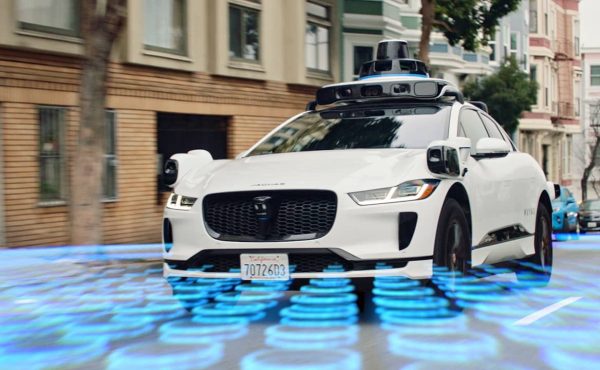
My first, and only, experience in one of Toronto’s hybrid taxis was a couple of months ago. I have since been bewildered by the lack of hybrid taxis on the road. There are roughly 40 hybrid taxis in the city, representing less than one percent of Toronto’s 5700 cabs. This is one of the lowest ratios of hybrid taxis in any major Canadian city. Toronto has fallen behind cities like Vancouver, who boasts over 100 hybrid cabs and a policy that all new taxis be hybrid. Toronto has also fallen behind its own 2007 clean air action plan goal of shifting all taxis to low emission or hybrid technologies by 2015.
A 2009 study published by the Toronto Atmospheric Fund, TAF, reported Toronto’s taxi fleet CO2 emissions could be cut by 25 percent, up to 19,000 tonnes per year, if all cabs went hybrid. The study compared conventional gas-powered Toyota Camry taxis with hybrid Camry taxis, collecting 750,000 km of fuel consumption data over 18 months, and found that drivers could save roughly a thousand dollars over the seven-year allowable taxi lifespan. While the savings are modest, the emission reduction benefit is substantial. Hybrid taxis emit an average of three tonnes less CO2 per year than conventional cabs.
Ownership structure is the primary reason hybrids have been slow to gain popularity. Two-thirds of cabs in Toronto are owned by one party and leased to a driver. This separation between owner and driver creates a split incentive. Taxi owners do not benefit from purchasing costly hybrids; it’s the drivers paying for fuel who see the gains. The remaining third of Toronto’s taxis are owner-operator. This structure enables drivers, who are also the owners, to realize a return on purchasing a hybrid. All the taxis in the TAF study were owner-operator.
Toronto Atmospheric Fund Hybrid Performance Estimates
Used vehicles for taxi use, allowed by the municipal code, create a further disincentive for both ownership models to opt for hybrids. Conventional gas-powered used vehicles, mostly year-old fleet vehicles, are available at a fraction of the price of hybrids. Drivers are also wary of hybrid battery technology. Replacement hybrid batteries can run in the range of 4000 dollars. And while there has yet to be a battery problem in any of Toronto’s hybrid cabs, drivers see potential battery replacement as a large financial risk.
The municipality, who dictates vehicle requirements, has been slow to encourage the transition to hybrids. While the city has raised fares to help drivers cover fuel costs, there has been little in the way of incentives to switch to hybrid technology. Mayoral candidate Sarah Thomson has proposed a one-time rebate of 500 dollars on licence fees for each taxi willing to switch to hybrid. However, the rebate will likely not be enough of a financial incentive to encourage taxi owners to make the switch. A change in licence structure, requiring all vehicles be owner-operator, or a bylaw requiring mandatory low emission or hybrid vehicles, would speed up the transition.
Local governments in the U.S. have been pushing to enact regulations for low emission and hybrid taxis for some years now. Despite initial resistance from taxi driver associations, there is now a bill before congress known as the Green Taxi Act, which would allow cities to enable such changes. For Toronto, a city that prides itself on its environmental initiatives, enacting a policy change that would encourage a hybrid taxi fleet is long overdue.
Do you think the city should change the municipal code to encourage hybrid vehicles? Is there a better way to create an incentive for taxi owners to make the switch?
Photos by: Adrian Lightstone and Toronto Atmospheric Fund






28 comments
Will a taxi last 7 years? Most peoples car’s can last much longer, but they are generally used two hours per day or so. Taxis are driven up to 24 hours a day, much of it in stop and go traffic.
Jury’s still out on benefits of hybrids until the costs, financial and ecological, of the inevitable death of the batteries is sorted out in the real world. Not to mention the efficiency loss of carting around the dead-weight of the battery/engine redundancy. There is also the matter that any expedited replacement of a working gasoline vehicle with a hybrid has financial and ecological costs associated with the manufacturing of said hybrid. I have a hunch that hybrids are a ‘flash in the pan’ and that the future of vehicles is full electric, or full gasoline, but lighter and more efficient. Whatever the case, personal vehicle cannot ever be considered ‘green’ with all of the associated manufacturing and running costs to the environment.
A taxi allows vast numbers of people to live in the city without owning a car, so even the dirtiest taxi is a green vehicle.
At this point I don’t think it appropriate to add a municipal code.
Reason:
I prefer that when tax money is spent it has a double effect. In this case it would be to provide cleaner air and bring better vehicle technology to Toronto at a more affordable price. The problem I have is that I don’t believe that a bulk purchase of Hybrids will bring a lower cost to the vehicles or improve their technology.
However:
I think the date I make in my calendar is 2012 where it looks like batteries will get an improvement to help with Canadian climate. I’m speaking of the Heating (or Cooling) of battery fluid which will accommodate temperatures lower than 10 deg Celsius. Also by that time I expect that fuel prices will recover which may make it a cost savings alternative.
That’s just my 2 cents
Lead acid batteries should not be used in hybrids, bus or taxis. There are newer batteries, that are also smaller in size, but still more expensive than lead acid. At the moment, lead acid batteries has a short life when compared with the new batteries, but until the price of the new batteries come down enough, it will be a couple of years before I would make hybrid taxis mandatory.
Why not just insist that all vehicles brought into the fleet from 2011 forward have a specified gCO2/km number, adjustable depending on how many passengers the vehicle accommodates? This number could start by excluding the dirtiest cars and be ratcheted down year by year, while accommodating a certain amount of choice by the driver as to which technology to purchase which falls into the acceptable range.
I don’t think hybrids are actually all that suitable for use as taxis: the batteries and electrical system make maintenance more complex and then there’s the matter of disposing them at their end of their useful life, which, given that taxis see a lot more mileage than other cars, will come sooner than for other hybrid owners. Taxi operators haven’t gone for hybrids because cost of operation (not ownership) does not appear to be offset by the fuel saving and/or life of the vehicle. As diesel fuel and engines become cleaner, we might actually see more of it in taxis, with the added benefit of longer useful life, more durability and easier maintenance. I think it would be more reasonable to mandate an emissions standard than enforce one type of powertrain. In fact, what if a taxi operator wanted to use all-electric vehicles?
That’s a good compromise Mark. One think to remember is that alot of the taxi system in Toronto is still fleet run and that might have an impact on all the points raised above.
I would add as I have before that Toronto’s cabs are among the dirtiest (the interior) in North America.
Hybrid taxis have been used in Victoria BC for over 10 years now, and the taxi owners have found that the brake replacement costs are much lower than for non-hybrid taxis (because of the regenerative breaking). Nor have the owners found that hybrid taxis wore out more quickly than non-hybrids, possibly because of much less engine vibration shaking the vehicle. This is the same effect of electric trolley bus bodies lasting over 25 years, compared to much less than that for diesel bus bodies, which require a major rebuild at 10-12 years.
not many hybrid taxi’s but Toronto does have the free, manpowered “taxis” in the summer months.
Do Victoria’s hybrid taxis cover as much distance as the average Toronto taxi? In similar traffic conditions? I imagine the difference in climate is a factor as well.
Required reading:
http://en.wikipedia.org/wiki/Hybrid_taxi
It’s an interesting article however, some of it is flawed because it’s based on estimated figures and insufficient real world numbers. My mom’s regular taxi driver Tarik, switched from a Ford Taurus to a Camry Hybrid about 2.5 years ago. He told me his hybrid uses less than half the gas of what his Taurus used (he keeps a spreadsheet recording kms, cost, and amount of gas every time he fills up). And he said so far, out of pocket maintenance costs are almost non-existent for the Camry so he estimates he’s on the road about 2 weeks more per year because his Taurus would often be out of commission in the shop for repairs.
Hybrid taxis make so much sense, it is not even funny. Please allow me to defuse some of the arguments here:
Hybrids won’t save enough on gas to be worth while: Seeing that the majority of driving these vehicles will see is on city streets, this will not be the case. Internal combustion engines perform most efficiently when travelling over a long distance at a steady pace. Urban stop and go driving over short distances not only kills your fuel economy, but creates excessive wear and tear on the drivetrain.
The numbers above probably figure a combined highway and city drive, which would not be good to compare with since most cabs would see city exclusively, and the Canadian numbers are VERY optimistic with their predictions. Since hybrids essentially switch between electric for short stop and go and gas for steady long distance, you could end up using very little gas in city driving. Hell, if all your driving is downtown, you could potentially use virtually no gas at all!
Hybrid batteries are expensive to replace: While this is true, other components of a regular drivetrain are far from cheap to service as well. And not only could your drivetrain last longer in a hybrid, but odds are the battery will outlast it as well. Someone I used to do deliveries with had a 2001 Prius which needed a battery replacement. It had about 350,000km on it and saw about 150km of driving everyday. Newer batteries are even more reliable…
While we’re at it, we should look at standardizing the look of our taxis. Pick a colour, any colour, just not the ugly orange and green combination that Beck currently uses. Ugh.
As far as I know, the oronto regulations on legroom, trunk size, etc. haven’t changed and still block most every hybrid car from being used as a taxi here. Victoria Prius taxis are illegal in Toronto.
To my mind, the owner/operator financial split is the most important thing to change for taxis to be efficient. No need to regulate if you can set up the finances so that those that buy the equipment recoup the energy savings.
@Rob, no vehicle can be called ‘green’: that’s just marketing. However, a taxi is far more green than a personal vehicle for the reasons you state. So is Autoshare, of which I am a member, and Zipcar. I am not an absolutist on ‘green’ issues, but we should ‘call a spade a spade’ and not be mislead by the propaganda.
As a cyclist, one can normally hear a cab coming near you for defensive or evasive actions. Hybrids, being quieter, almost like bikes, may increase the numbers of cab-caused injuries from taking away warning rattles/vrooms.
A Prius basically doesn’t have enough trunk space to be appealing as a taxi here anyway. The Camry is popular but the hybrid version doesn’t seem to be.
I believe that this program could work. My reason is based on my experience working on a project called Taxi 07 in New York City. In 2007, nonprofit organization, The Design Trust for Public Space, launched a project to redesign the Taxi system — not just the car, but how the system functions. Working in partnership with the NYC Taxi & Limousine Commission, the Design Trust wrote a long term strategic plan for improving the taxi system (Taxi 07:Roads Forward) http://designtrust.org/publications/publication_07roadsfwd.html. This plan included the recommendation for more hybrid taxis, and since the launch of Taxi 07, NYC has introduced more than 500 hybrid cars. Although this is a small percentage of the overall fleet, plans are in place to transform the entire fleet over the next 5 years — the life of a taxi in NYC is 3 years or 300,000 miles, whichever comes first. As taxis go off the street, they will be replaced with hybrid vehicles. In addition, they’ve launched new programs such as taxi sharing, and Taxi of Tomorrow – a plan to create a custom built cab for New York.
Since working for the Design Trust, I’ve moved to Toronto and I’ve been interesting in the various differences between the NYC taxi system and the Toronto taxi system. There are 13,000 yellow cabs in NYC (+ 32,000 for-hire vehicles), so granted the impact of a hybrid fleet in NYC would have significantly more impact than it would in Toronto. However, reducing the amount of emissions by taxis would be a great service to the residents of Toronto.
Toronto should follow NYC’s lead and aim to have an entirely hybrid system one day!
Hamish, car makers are already working to make hybrids more audible to pedestrians and others. Perhaps there could be a distinctive ‘taxi noise’?
We have to keep the din of traffic because people can’t drive safely? Nice.
Toronto’s cab industry is an embarrassment to this city. Being the largest city in Canada and 4th largest in North America its shameful that most drivers knowledge of the city and its roads is minimal at best. To make matters worse it is common place to have cabbies try to pull a fast one by taking a longer rout or continue to talk loudly on their cell phones. Durring the summer months good luck getting a cabbie to turn on the AC as mysteriously the AC in most Toronto cabs stops working (they dont like how much gas the AC consumes) All these problems and hassles given when trying to pay with debit our cabs look awefull inside and out. we need to fix this issue ground up.
‘We have to keep the din of traffic because people can’t drive safely? Nice’ – No, not because people can’t drive safely but because silence lulls people into a false sense of security. Not to mention the problem that inaudible cars pose to the blind. The research on the issue focuses on adding humming-type sounds – not exactly a din by current standards.
Here’s another reason why the Prius will not be popular among taxi drivers – it’s a hatchback. So putting the luggage in the back means exposing the back seats to wind, snow, rain – possibly while the passengers are already seated.
One further strike against the Prius – like Joe Pantalone’s SmartCar, it’s not made in Canada. Taxi/limo sized cars are more likely to be made on this continent.
Nice work, really appreciated!
The best way to create an incentive for taxi owners to make the switch to Hybrids and other low-emission vehicles is to demonstrate to them that operating a Hybrid will bring them more business. In October, I started Eco Taxi, Toronto’s first taxi brokerage to operate only Hybrid vehicles, in an effort to bring together residents and organizations who want a green taxi service with independent owners operating Hybrid taxis who, apart from the Hybrid markings on their vehicles, have limited means for marketing their services. This model has been successful so far and our client base and network of drivers is growing quickly. It might be some time before the City acts on this issue, so it’s good to know that there are other ways to address the problem. Thanks, Adrian, for giving this topic some space.
Steve